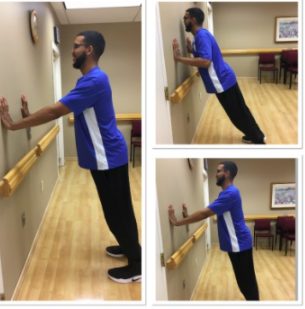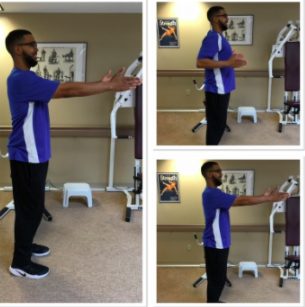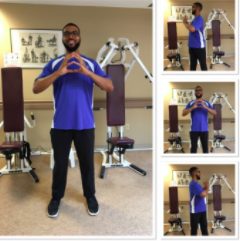4 Functional Exercises to Improve Daily Movements
Functional exercises can help you during your busy, active day. From pushing and pulling to turning and twisting, your body’s in constant motion. And there’s nothing worse than straining a muscle doing something that you’ve always done.
4 Basic Moves Made Every Day
Whether your day is one of work, fun or leisure, you rely upon four basic movements to keep us active and participating to the fullest:
- pressing motion
- pulling motion
- bending and stepping
- twisting and turning
Functional Exercises to Prevent Injury in Daily Movement
To help strengthen and improve your ability to perform these daily movements, consider functional exercises. These movement-focused exercises can be done at home, with or without equipment.
In addition to being stronger and more confident as you go through your day, you can help reduce the risk of injury.
1. Pressing Motion
A pressing motion is used when pushing yourself up out of bed, reaching and extending to put things away on a shelf or pressing yourself up from a seated to standing position.
The primary muscle groups engaged are chest, triceps, shoulders, and core. To help prevent injury in a daily movement, strengthen muscles with a modified chest press.
Modified Chest Press

Starting Position: stand facing a wall, extend arms in front of you, lean forward slightly and place your palms against the wall with fingertips no higher than the top of the chest.
- On inhale, bend your elbows until your nose nearly touches the wall.
- On exhale, push through your palms up to starting position.
- Work your way up to 12-15 reps.
Expert Tip: Proper hand placement is the key to this exercise. Hands too high – tension on your shoulders. Hands too low – tension on your back. The closer your feet are to the wall the easier the exercise will be.
2. Pulling Motion
A pulling motion is used for opening doors, removing items from cabinets or performing yard work such as raking or weeding.
The primary muscle groups engaged are: back, shoulders, biceps and core. To help prevent injury in these muscles, do 12-15 repetitions of rows a few times a week.
Rows

Starting Position: stand upright, feet shoulder-width apart, knees soft, arms fully extended in front of you, elbows slightly bent, palms are facing inward, shoulders relaxed and pressed down.
- On exhale with back muscles engaged, bring arms in close to the body, elbows pointing backward, press shoulders down.
- Hold for several breaths, keeping core engaged and back straight.
- On inhale, reverse the motion back to the starting position.
- Work your way up to 12-15 repetitions.
Expert Tip: Perform this exercise from a seated position. Use a chair without arms and keep the core stable and back straight. Add dumbbells or a medicine ball to increase resistance.
3. Bending and Stepping
Knee and hip dominant movements are used when picking things up off the ground, walking up the stairs, squatting, sitting down or tying shoes.
The primary muscle groups engaged are gluteal, hamstrings, quadriceps, calves and core. Chair exercises can strengthen your body to help prevent injury as you perform movements throughout the day.
Chair Stands

Starting Position: stand in front of an armless chair, feet shoulder-width apart, knees soft, back straight, arms at sides with palms facing in.
- On exhale bend at hips to sit back into the chair, extending arms out in front of you as you fold hips – when you make contact with a chair, arms will be fully extended straight out in front of you.
- Hold for several breaths, keeping core engaged and back straight.
- Take a deep breath in and exhale your body back to start position.
- Work your way up to 8-12 repetitions.
Expert Tip: Many people of all ages suffer injuries from improper technique while performing knee and hip dominant movements, so if you have time for only one exercise a day this would be my recommendation. Dumbbells may be added to increase resistance.
4. Twisting and Turning
Torso rotational movements are used anytime you reach across your body.
The primary muscle groups engaged: core, oblique, gluteal, core. Do the torso twist to help avoid an injury when reaching.
Torso Twist

Starting Position: stand with feet shoulder-width apart, knees slightly bent, back straight, press shoulders down, engage the core, arms bent, elbows out, fingertips touching.
- On exhale rotate torso to right, keep back straight, core engaged and arms up.
- Inhale rotate torso back to the center.
- Exhale rotate torso to left, keep back straight, core engaged and arms up
- Inhale rotate torso back to the center.
- Work your way up to 5-6 repetitions in each direction.
Expert Tip: Perform this exercise from a seated position. Use a chair without arms and keep the core stable and back straight. Add dumbbells or a medicine ball to increase resistance.
Subscribe to Life Enriching Communities Blog
"*" indicates required fields